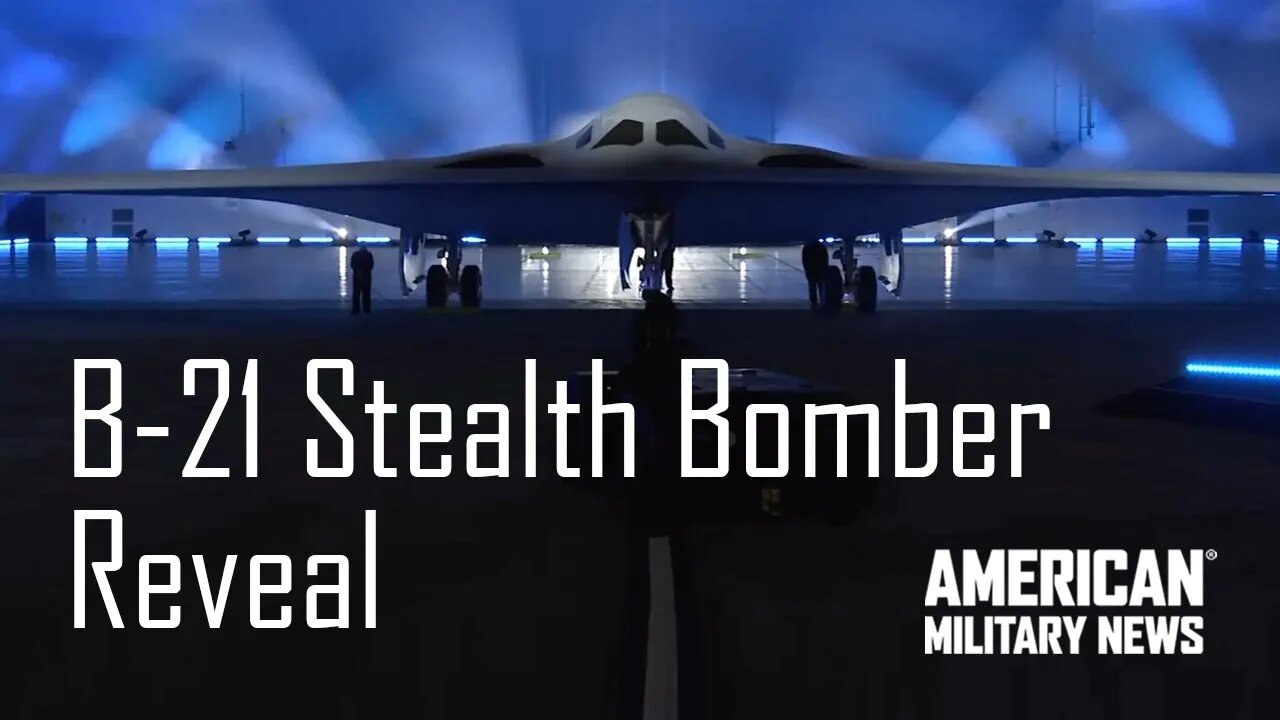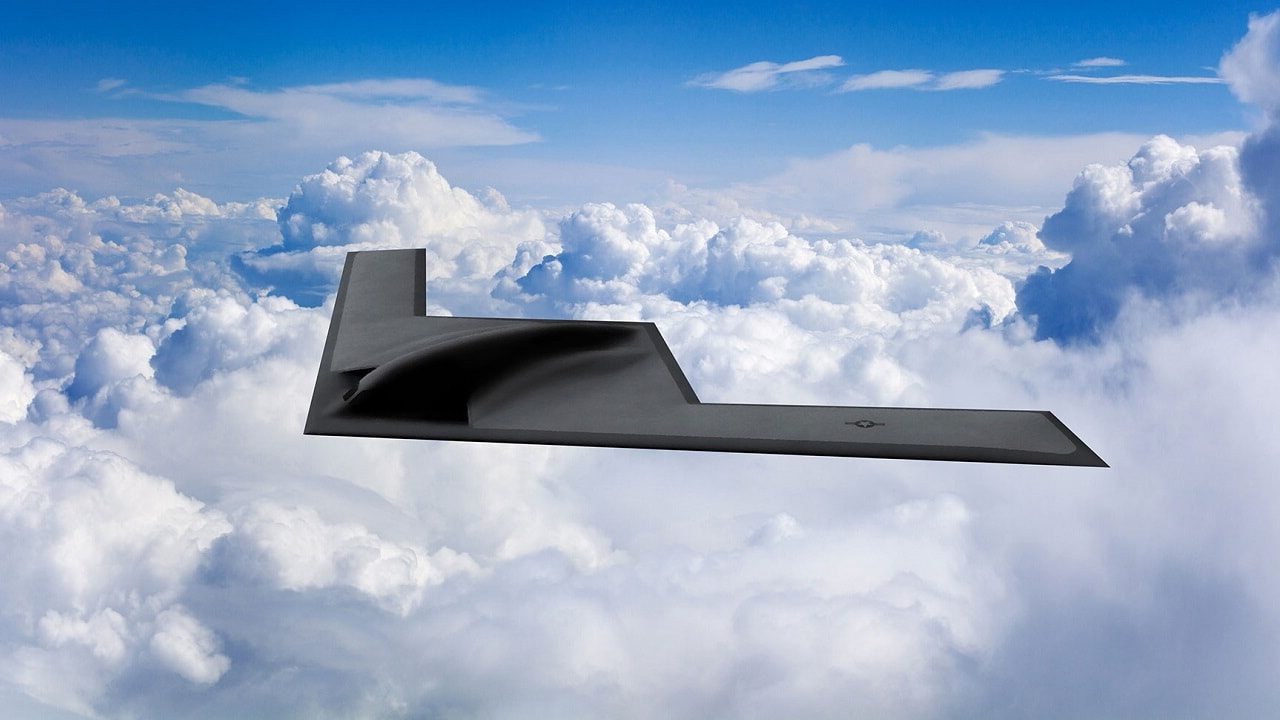
The glitzy debut of the B-21 belies a payload of military industrial disappointments.
The B-21: Another Air Force Diva that Can’t Deliver?
Andrew Cockburn / The Quincy Institute for Responsible Statecraft
(December 8, 2022) — Consistent with today’s trend to render all defense as performance art, the unveiling of the new Northrop Grumman B-21 “Raider” bomber at the Northrop plant in Palmdale on December 2 was designed with the care and production values of a Superbowl commercial.
The blue backlighting, the sonorous music (“One Day,” by Caleb Etheridge) the shiny shroud strip-teased off the partly hidden aircraft by shadowy figures, the flyover by the bombers the B-21 will allegedly replace, were military-industrial showmanship at its best, giving us not a scintilla of worthwhile information about the plane.
Fittingly, its primary selling point, according to its promoters, is “stealth” — a supposed ability to remain invisible to radar and other sensors. Given that earlier systems advertised as being cloaked from radar scrutiny, such as the F-22 and F-35 fighters, have turned out to be visible after all — especially to decades-old low-frequency radar systems, the prospects are not hopeful. We do, however, know that it has the most important characteristic of stealth: invisibility to the taxpayers.
The Political Engineering Was Never Secret
For many years, the Air Force declined to release a cost figure for the B-21, claiming the figure was classified on grounds that our enemies would learn valuable secrets if they knew just how much of a wallop it was going to be on our pocketbooks.
Now, thanks to Tony Capaccio of Bloomberg, we know the official estimate of the projected cost to develop, produce and operate 100 B-21s for thirty years is a cool $203 billion. However, back when the Air Force were telling us we had no right to know exactly what we were paying for, they did release the most important fact of all: the major corporations — Pratt & Whitney, BAE Systems, Orbital ATK, and others — who would be the major subcontractors in the Northrop-led program.
By absolutely no coincidence at all, these turned out to be in congressional districts and states represented by senior figures on important defense committees in the congress. This is known as “political engineering” in which defense programs are rendered politically invulnerable to cancellation or funding shortfalls thanks to the salting of key constituencies with rich contracts.
Brazenly, the Air Force announced at the time it was naming the prime contractors on the bomber “in a sign of transparency to gain public trust.”
Our Newest Nuclear Bombers
Are Already Clapped Out
Given the high-profile F-35 fiasco (years late, over budget, plagued with faults, etc.), the Air Force is probably a bit short on public trust at the moment, which is presumably why it enabled the made-for-TV-commercial Palmdale extravaganza, including overhead appearances by bombers currently in service, the B-52, B-1, and B-2.
Despite its advanced age, the B-52 will outlive the B-1 and B-2, remaining in service until 2060. The latter two may perhaps make it to retirement, slated for 2030, while a few of them [are] still fit to fly. But prospects for that are not hopeful. Even in 2019, out of the 104 B-1s, built in the 1980s, just seven remained fully mission capable.
The B-2, like the B-21, was once projected to be a 100-plane force. As costs mounted, that number shrank, (an inexorable feature of all such ambitious high-tech programs) and, in the end, only twenty-one were ever built. Two have crashed. It is not clear how many of the remainder are still mission-capable, but a recent “elephant walk” runway lineup of B-2s at their Whiteman base in Missouri (where all B-2s reside) featured a mere eight planes.

It’s All in the (Out of Date) Data
Some unkind expert commentators have suggested that the B-21 might be more properly dubbed “B-2.1” or “B-2B”, given its essential similarity to its (allegedly) stealthy sibling. The shape indicates no radical departure in stealth design. Its radar-absorbent coating may incorporate some technological breakthrough, although if so, that would surely have been applied to the F-35 also, of which there is no sign.
“The way it operates internally is extremely advanced compared to the B-2,” claimed Northrop CEO Kathy Warden at the ceremony, “because the technology has evolved so much in terms of the computing capability that we can now embed in the software of the B-21.” Software is nowadays the principal novelty of new defense systems, at least in the boasts of their promoters.
Warden was most likely referring to computing properties fusing data from a wide range of sources that will hopefully enable the bomber to dodge enemy air defenses in stealthy fashion.
This approach depends totally on the data inputs being up-to-date to the hour, if not the minute. But such “Mission Data Loads” comprising vast files of maps, electronic signals, information about threat missiles, along with data on friendly systems in the relevant area of operations, are currently produced in just one place: the United States Reprogramming Laboratory, a small facility at Eglin Air Force Base in Florida.
Astonishingly, it is taking as long as six months to update the data load for just one region of the world, by which time it will almost certainly be already out of date.

What Use Is It Anyway?
Even supposing the B-21 were to be produced in the numbers, at the cost, and with capabilities as advertised — all extremely unlikely — it would still be an entirely pointless endeavor. The word “deterrent” was much bandied about at the ceremony, essentially the same shopworn excuse for preserving a force of long-range nuclear bombers trotted out by the Air Force ever since the first nuclear missile entered service.
The B-2 was sent to bomb Libya, Serbia (where it hit the Chinese embassy) Afghanistan and an ISIS camp in Syria — soft targets that hardly justified its $929 million price per plane.
The B-21 will surely be equally short of useful function, unless we count the stealthy disappearance of $203 billion (at the very least) of our money. That shroud will stay on unless and until the taxpayers revolt and unveil what’s really going on.
This article was republished from Spoils of War
Posted in accordance with Title 17, Section 107, US Code, for noncommercial, educational purposes.